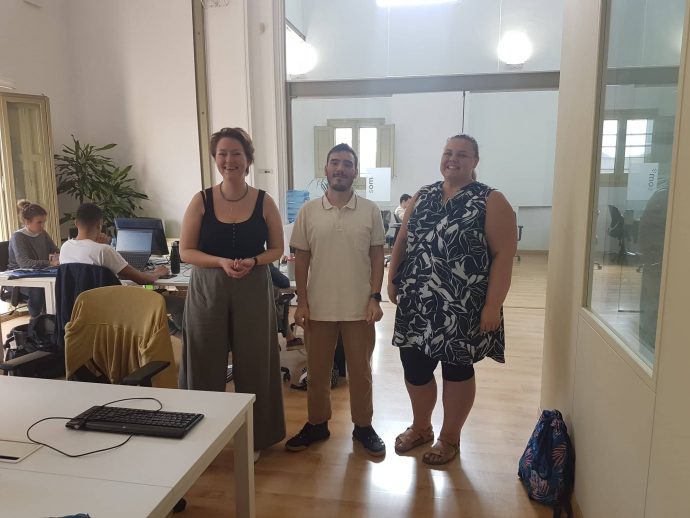10 MISTAKES THAT CAUSE KICKSTARTER PROJECTS TO BE DELAYED

Crowdfunding can be incredibly thrilling, right?
You’ve been dreaming about something for months, maybe even years, and now you finally have a chance to bring it fruition. And so you carefully put together your Kickstarter campaign, estimating how much it will cost and when you’ll be able to ship it.
Hold on. Don’t take it live yet. There is something you need to know.
A huge number of Kickstarter projects are delayed:
A study in 2012 found that a whopping 84% of Kickstarter’s top 50 projects shipped late.
Before you launch your project, you need to know why so many projects ship late so you can know how to avoid those mistakes.
Here are 10 common problems that cause Kickstarter projects to ship late.
#1 – You’re Way Too Confident
When you’re in the initial stages of creating a product and preparing for your Kickstarter launch, it’s hard not to be excited. Confident. Thrilled. You’ve seen the early results and know that you’re onto something big. You can already see that this is going to change things.
When you’re in this state of mind, you usually feel incredibly confident. Confident that you can make everything work. Confident that you can get the product to market in time. Confident that you can navigate all the challenges.
But when you actually get into the process of turning your initial idea into a mass produced reality, you suddenly realize how complex everything is. You have to deal with supply chains and backorders and power outages.
You have to figure out how to ship everything to your backers as well as stay on top of any issues that arise. A single break in any of these links can cause your Kickstarter project to go off the rails. Before you know it, you’re delayed weeks, maybe even months.
#2 – You Didn’t Price Your Rewards Correctly
You might think that pricing is easy.
You simply add up the cost of the materials, assembly fees, and any other obvious fees.
But when productions actually begins, you may find that you didn’t leave enough room for yield losses (example: damaged products that didn’t make it the whole way through the assembly line) or design changes.
When complications arise, you usually only have two options:
- Eat the losses
- Delay shipment
It’s hard to stomach these types of losses, which is why many creators choose, or more often are forced by their circumstances, to delay their shipments.
#3 – You Sold Way Too Many

Sounds like every creator’s dream, right?
You hoped to sell 1,000 and end up selling 10,000. And while this certainly can be exciting, it almost always leads to significant delays.
Several reasons for this:
- Problems are discovered when producing initial large batches, which then need to be scrapped, which then eats up money.
- Supply chain issues arise because you didn’t anticipate the volume of parts needed.
Speaking of his own experiences with Kickstarter, Triggertrap creator Haje Jan Kamps writes:
[Some companies can’t handle] the adequate orders of magnitude: A company that is an expert on designing a product that will be manufactured in a quantity of 30 units at a price point of around £1,000 is not necessarily good for a production run of 1,000 units at £30: They are completely different skill sets.
Ideally, you’ll be able to start a bit smaller and then ramp up as all the problems get ironed out. This will allow you to ship on time.
As CNN noted:
Over and over in our interviews, the same pattern emerged. A team of ambitious but inexperienced creators launched a project that they expected would attract a few hundred backers. It took off, raising vastly more money than they anticipated — and obliterating the original production plans and timeline.
The timeframe you estimated for shipping during your campaign was based on a smaller order volume, it normally takes more time–often a lot more time–to process larger orders. In many cases, the factory you talked to during your initial planning won’t be able to handle the larger order and you’ll lose time finding a new manufacturer.
#4 – You Over Promised
One of the great temptations with crowdfunding is to promise too many features.
You’re excited, and you can’t wait to show people what your product can do. And, you really want to get people on board with your campaign. This often leads to promising way more than you can actually deliver.
It’s far better to start simple and make sure you can deliver.
Start with your core, most powerful features, and then slowly expand over time. With each iteration, you can add in something else. Rather than promising everything at the start, promise one great thing.
Yes it’s cliché, but you can better ensure your Kickstarter success when you underpromise and overdeliver.
#5 – It’s Difficult To Scale Your Prototype

Many prototypes are made in homes. You create your own mold, buy some supplies, and figure out how to do everything yourself. It hardly costs you anything and doesn’t take a crazy amount of time. You then estimate overall costs and delivery time based on your very small efforts.
However, when you start to scale, you realize that there is no way you can mass produce your product using your original process.
Suddenly you need to bring in experts and factories and large suppliers. Costs rise, production time increases, and all your initial estimates go out the window. Your only option becomes delaying shipping.
#6 – You Encounter Cultural Barriers
When you outsource some or all of your production overseas, you may find yourself encountering unexpected barriers.
Communication challenges can cause confusion, different expectations can create tension, and a lack of knowledge about importing and exporting can seriously delay things.
In order to avoid this, do research about the manufacturing process in the specific country your product is being made.
Know what you’re getting into so that you properly estimate the ship date.
#7 – You Underestimate Lead Times For Components
The “lead time” is how long it takes for component manufacturers to actually get the components in your hands. It’s incredibly easy to underestimate how it will take to have components delivered.
When it comes to securing the components, you usually have one of two options: go straight to the manufacturer or use a distributor.
If you’ve done your research and know the lead times involved for you product, you can usually use a manufacturer, which will be much cheaper than going with a distributor.
When you use a distributor, you’ll be able to get the components much more quickly but will end up paying more, which can quickly burn up your cash.
#8 – Your Scope Keeps Getting Bigger
What happens if you are shooting for $10,000 and end up raising $150,000?
Sounds like a dream, right?
You’ll probably start adding on stretch goals and hire more people to speed things up.
But adding stretch goals means you have more to deliver and hiring more people means you have a bigger staff to manage. Both of these things can end up significantly delaying your product.
Even more, with more options available for your backers, the complexity of your shipping compounds:
For example, when you have customized items for each backer–a common stretch goal perk–and/or multiple different sized rewards that will all be shipped in the same package because then your shipping price may increase unexpectedly beyond your estimates due to things like volumetric/dimensional weight rules that most shipping carriers enforce.
#9 – You Hire The Wrong People
Sometimes you hire people who are completely wrong for a job. You contract a manufacturer who makes big promises, only to completely drop the ball. This happened with the Kreyos Smartwatch, which raised $1.5 million out of a $100,000 goal.
Creator Steve Tan wrote of the manufacturer:
What I don’t understand till now is, with the success of Kreyos, and the amount of money we paid him, why didn’t Pro [CEO of Viewcooper Corp] invest in talent or hiring the right people. The total amount of people working on Kreyos from his end was only around 4 people, some of whom we realized are just working part time. We wouldn’t have minded him pocketing so much money if he at least delivered something that we can fix for our backers and customers and continue selling for a few more months until we conceptualize a new and improved version.
Tan’s mistake ultimately ended up killing the entire project.
#10 – You Run Out Of Money
Sometimes, despite all your best efforts, you simply run out of money.
You run into massive production problems or encounter cross-cultural assembly issues you never expected. Maybe you discover a design flaw and have to scrap a large batch. You’re only option is to throw money at the problem and try to fix it.
When you have to throw a lot money at problems, there’s a good chance you’ll burn through all your raised funds. In that case, you’ll have to look for outside funding if your project is ever going to ship. The best case scenario is that you get those funds and ship late. The worst case is that you have to scrap your entire project.
Conclusion
Kickstarter is an amazing platform that allows creators to create amazing projects.
However, it’s also a swamp that is full of potential pitfalls. Successfully taking a project from prototype to being shipped takes skill.
- Do your research.
- Ask the right questions.
- Figure out what some projects are delayed and then plan for those types of delays.
In the end, when you do things correctly up front, you’ll be spared innumerable headaches down the road.

Link to the original source: https://www.floship.com/10-mistakes-kickstarter-projects-delayed/











